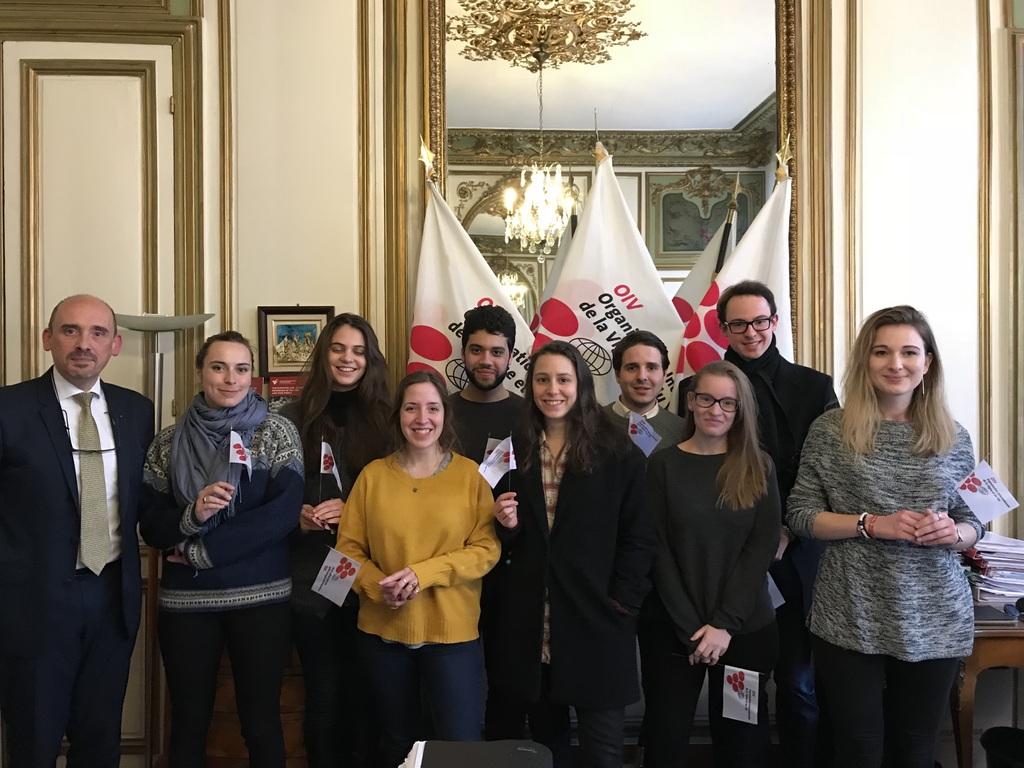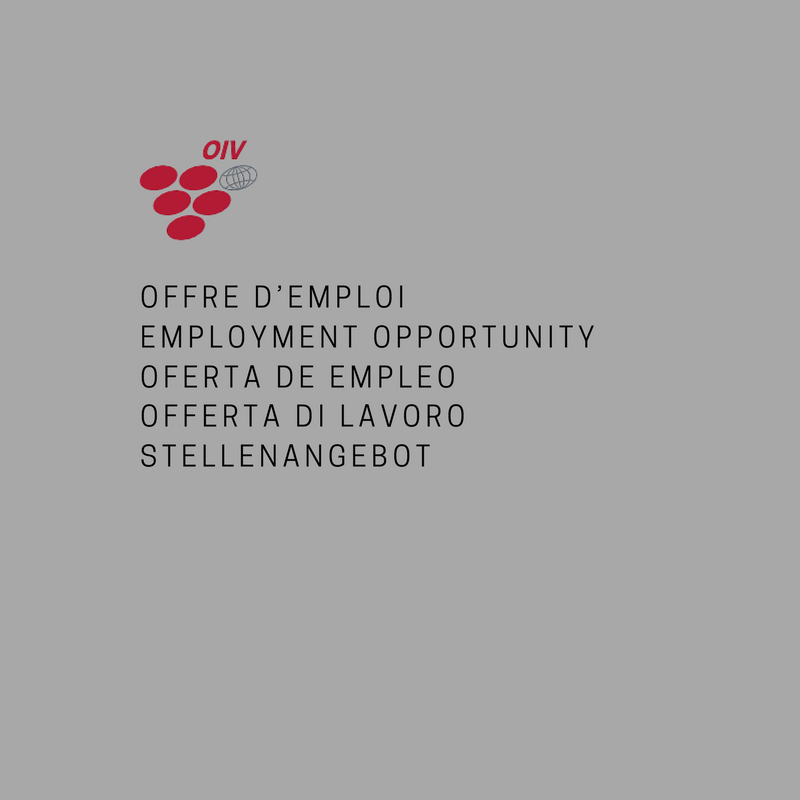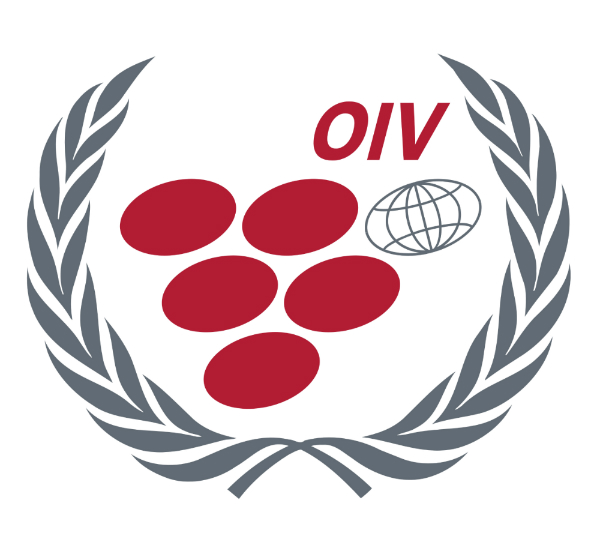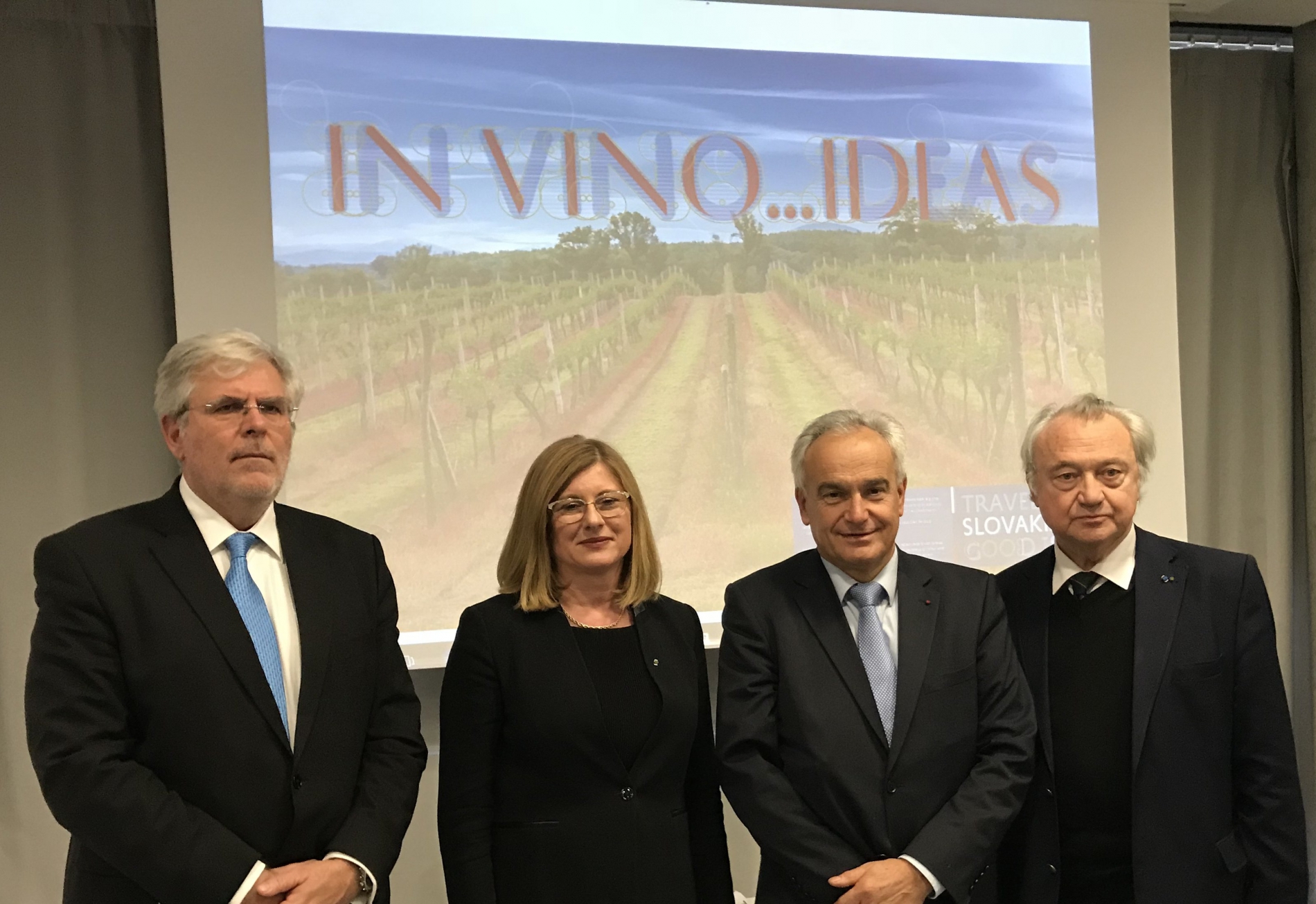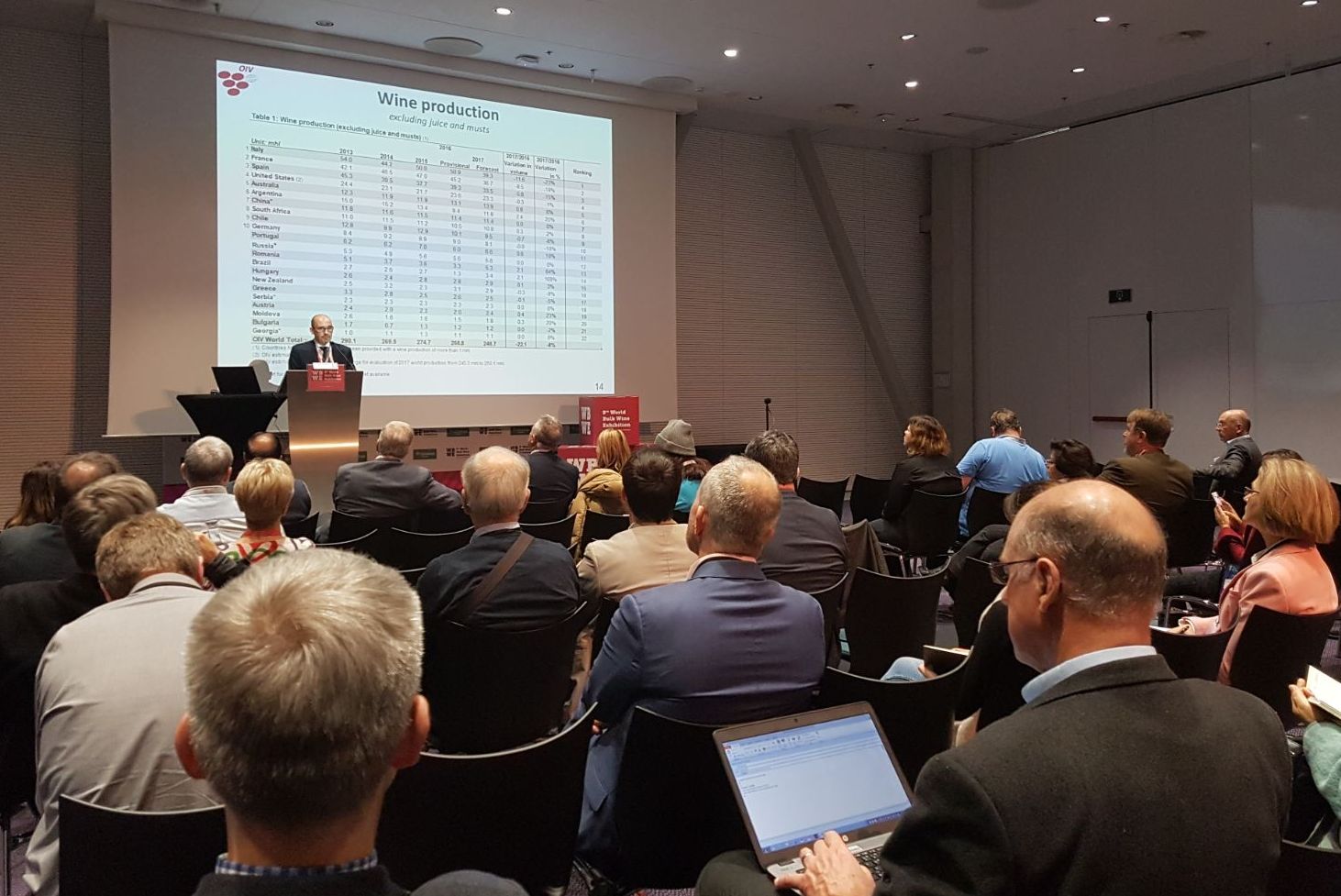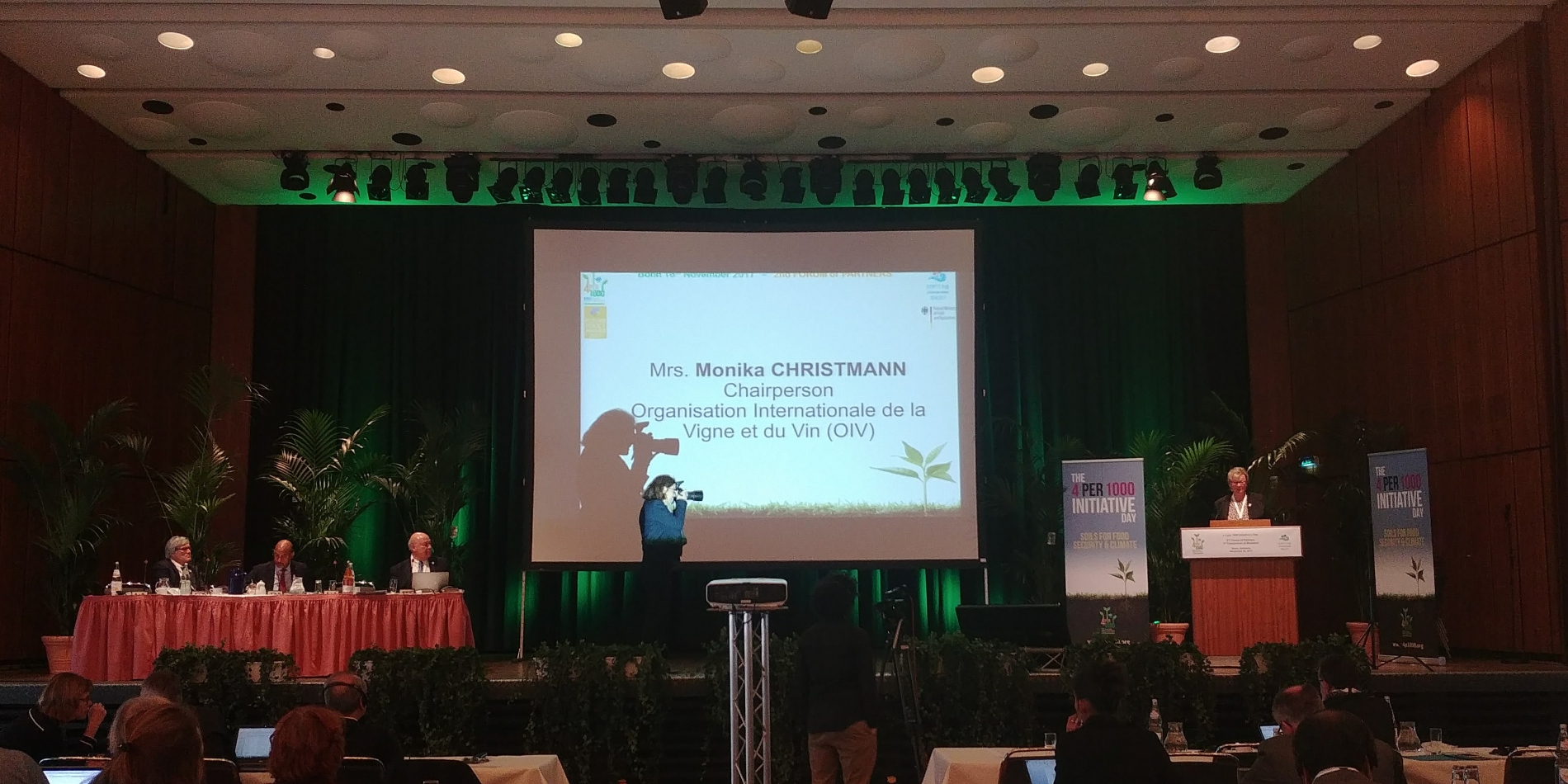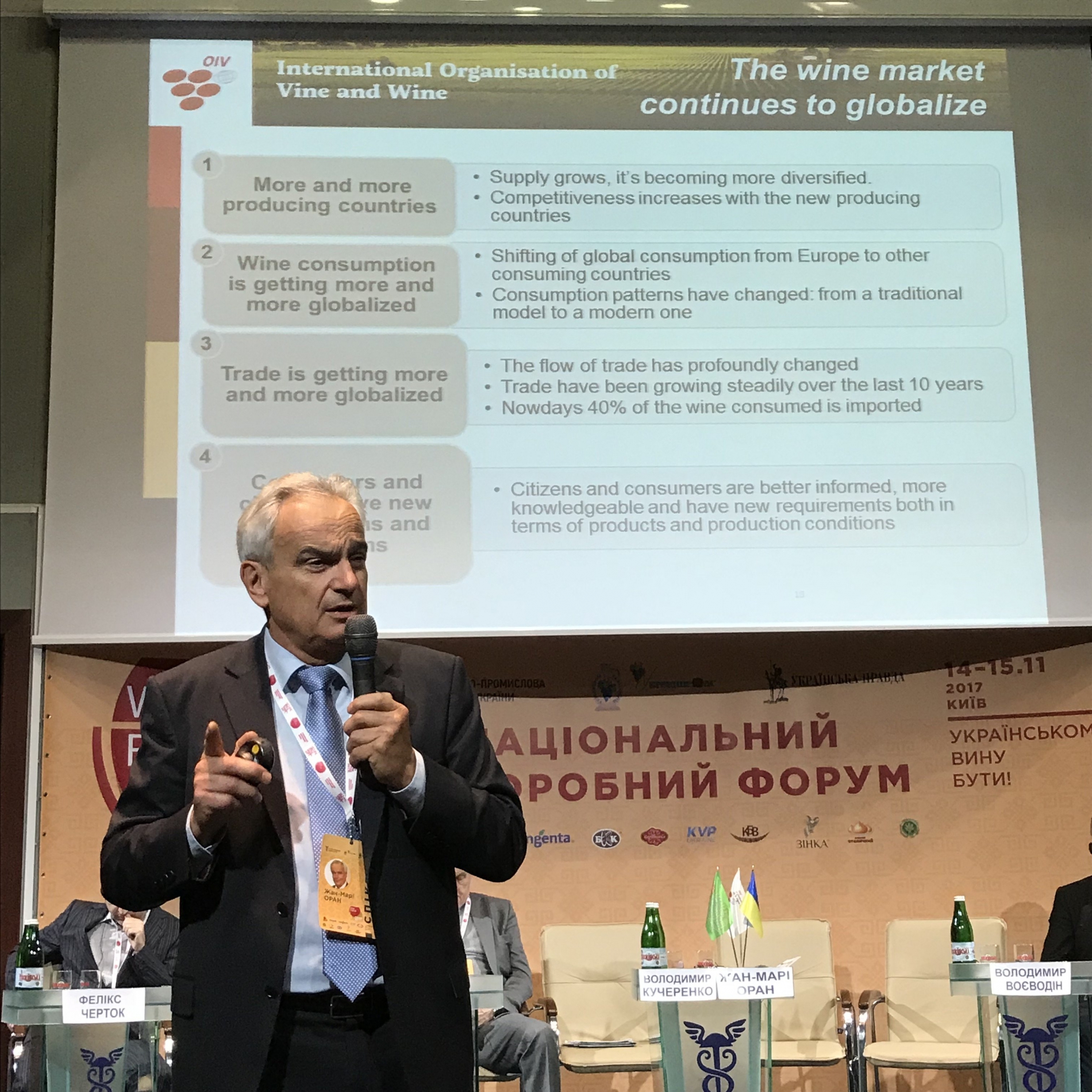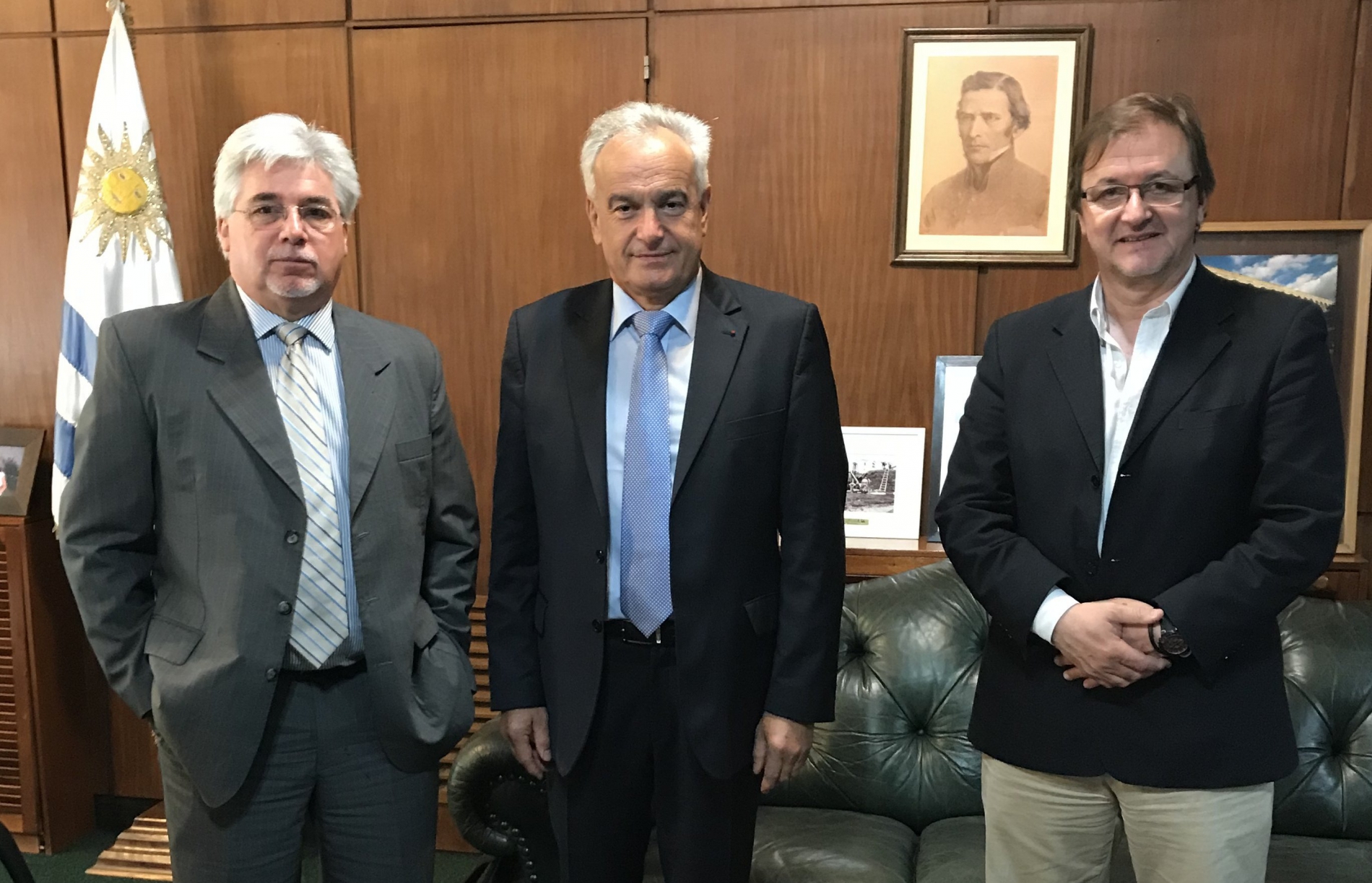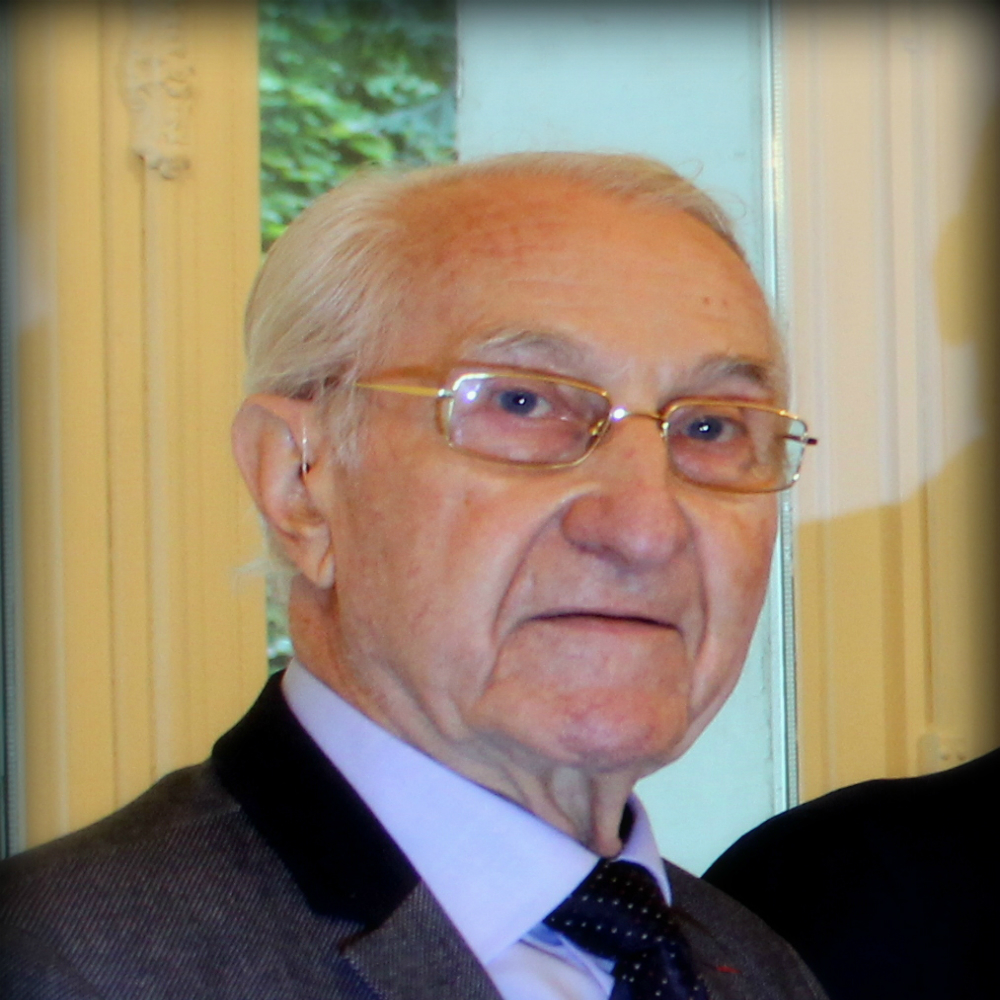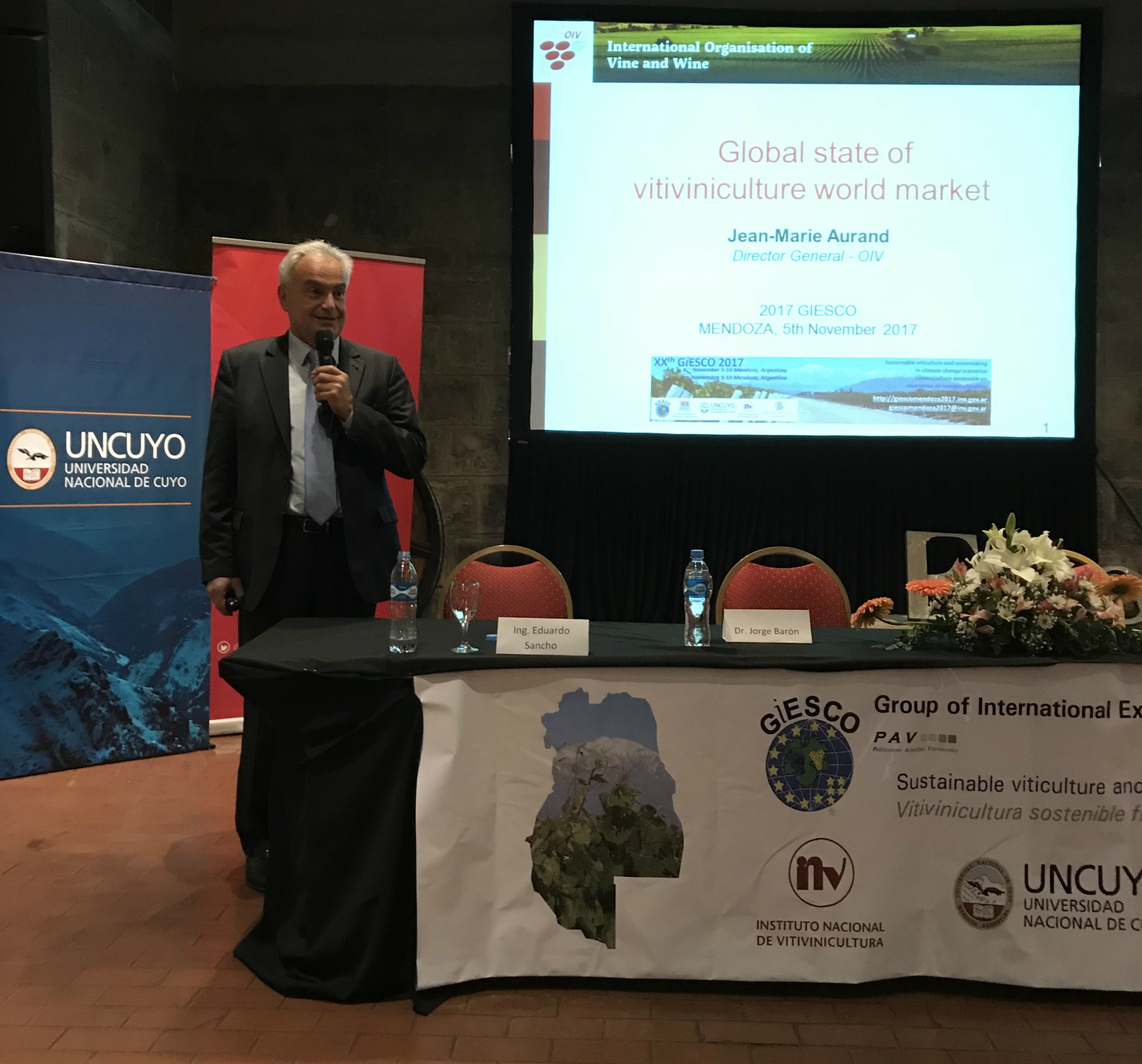21 фев 2018
In February, at the OIV headquarters, the General Secretariat of the Organisation hosted numerous students from different training programmes who wished to explore different aspects of the global vitivinicultural field and its international governance.Students on the Master II in International Administration at Paris Panthéon-Assass University discovered the legal aspects of the management of an intergovernmental organisation and its specific characteristics, while those on the Master II in Wine and Spirits Law at the University of Reims Champagne-Ardenne looked at the legal issues of the sector related to geographical indications or labelling, and students on the Bachelor Sc in International Wine Business (IWB) at Hochschule Geisenheim University focused on economic developments in the sector and markets. The Director General of the OIV was heavily involved in these meetings in order to exhibit the missions of the OIV and the way it functions, and to present the major trends and issues in the sector. Before these students, who came from 10 or so different countries, Jean-Marie Aurand also recalled the importance and investment of the OIV in training upcoming generations who will be called upon to manage the sector. The Organisation conducts this in particular via the "Training" Expert Group, which has defined minimum levels of training for the positions of oenologist and sommelier, and also through the database of international vitivinicultural training programmes.
20 фев 2018
Job descriptionProvide secretarial services for the Viticulture Commission, the Table grapes, raisins and unfermented vine products Sub-Commission and associated expert groups.More information and recruitment conditionsApplication form (our website only allows documents in pdf format. To request the application form in word format please contact job@oiv.int)
28 янв 2018
Journals, advertising and commercial documents are not accepted.An award-winning book or not awarded book will not be presented to the Jury a second time. 2 submission forms : http://oiv.int/en/the-international-organisation-of-vine-and-wine/oiv-awards or jurydesprix@oiv.int● Paper printed books and / or .PDF format / Kindle in the 10 categories.● Interactive digital tool only in the first five categories : 1-Viticulture, 2-Œnology, 3-Vitivinicultural Economy and Law, 4-History, Litterature and Fine Arts, 5-Wine and Health.
30 ноя 2017
On this occasion, during a presentation of the wine sector, Ms Gabriela Matečná, Minister of Agriculture and Rural Development, highlighted the variety of terroirs that determine a rich variety of quality wines. The Slovak Republic is implementing a programme of modernisation, which endeavours to promote the use of new vine varieties and native vine varieties, as well as encouraging initiatives with the aim of developing wine tourism. The Small Carpathian Wine Route, which runs along the vineyards of almost 400 grape growers, is an illustration of this.Around 15 companies took part in the tasting that followed the presentation.Jean-Marie Aurand praised the quality of the existing relations between the OIV and the Slovak Republic, which supports the guidelines and work of the Organisation. The Director General also made reference to the action of H.E Ambassador František Lipka as President of the OIV Award Jury, which every year recognises authors and editors of works on different aspects of vitiviniculture (technical, economical, historical or cultural).With a surface area of 16,600 ha and production of 310,000 hL of wine per year – 70% of which were designation of origin wines – the Slovak vitivinicultural sector has seen a major revival.H.E Ambassador Igor Slobodnik, Gabriela Matečná, Jean-Marie Aurand and H.E Ambassador František Lipka
20 ноя 2017
On this occasion, he recalled the modification made in 2017 to the Harmonised System (HS) Nomenclature of the World Customs Organization with the creation, at the request of the OIV, of the new 2204.22 subheading regarding wines in containers holding more than 2 litres but not more than 10 litres.The HS is used by over 200 countries, as well as economic or customs unions, to draw up national customs tariffs and establish international trade statistics for the purposes of classifying goods traded around the globe. Before 2017, the HS only comprised two subheadings: 2204.21, which identified wine in containers of 2 litres or less, and 2204.29, which identified wine in containers of more than 2 litres – the latter being generally defined as bulk wine. Operators are therefore looking forward to the first statistics, which will make it possible to distinguish wines intended to be packaged in containers of under 2 litres from those sold in volumes of between 2 and 10 litres, and those sold in volumes of over 10 litres.
20 ноя 2017
The 4 per 1000 initiative aims to promote sustainable soil management in order to take action for food safety and the climate. The event attracts a large number of personalities from all arenas: government representatives, intergovernmental and non-governmental organisations, and research institutions. During the opening session, Monika Christmann gave a presentation on the OIV, including its involvement in issues related to environmental protection and sustainability.Soils are a place of considerable carbon stocks, yet often overlooked. An increase of 0.4% per year of soil carbon stocks, thanks to adapted cultivation practices, could absorb up to 80% of total greenhouse-gas emissions.The aim of the 4 per 1000 initiative is to encourage approaches that seek to promote carbon sequestration in soils. The initiative, launched by the French government during COP21 in 2015, has seen strong expansion since. Today the consortium has 21 countries and 11 intergovernmental organisations as members – including the OIV – while 19 countries and over 100 non-governmental organisations and research institutions take part as forum members.
19 ноя 2017
This forum brought together over 250 participants, including the major Ukrainian vitivinicultural companies. Discussions focused on the state of the vitivinicultural sector and its prospects surrounding the key issues: vineyard development, modernisation of companies, standardisation and the evolution of the regulatory framework in accordance with international standards.The OIV Director General, after having praised the quality of discussions during this forum, gave a presentation on the OIV and its missions, highlighting the main developments of the vitivinicultural sector at the global scale and the major issues for the future. He particularly insisted on the importance of the standardisation of products, according to international standards, to ensure their quality and meet consumer expectations on both the internal and export markets.The forum was extended by the Ukrainian Wine Festival, during which the wines and brandies of the major companies in the sector were presented.With a vineyard surface area of 45 000 hectares, Ukraine produces almost 1 million hectolitres of wines and brandies. The country has almost 150 such companies. During Jean-Marie Aurand's visit, he also had a meeting with the First Vice Prime Minister of Ukraine, Stepan Kubiv, in order to examine the prospects of the Ukraine returning to the OIV. With the First Vice Prime Minister of Ukraine, Stepan KubivWith the Ukrainian authorities
14 ноя 2017
This will take place in Punta del Este on 19-23 November 2018, on the general theme of "Shaping the Future: Production and Market Challenges".The Uruguayan Minister for Agriculture, Mr Tabaré Aguerre, confirmed his country's full commitment to the success of this event.Jean-Marie Aurand, after paying a visit to the location where the Congress is set to take place, expressed his great satisfaction with the way in which the various actors involved are mobilising more than a year in advance, and especially with the high level of involvement of the INAVI (National Institute of Vitiviniculture).Tabaré Aguerre, Jean-Marie Aurand and José Lez Secchi
12 ноя 2017
One month ago, at the OIV headquarters, he was celebrating the 30th anniversary of the OIV Master's in Wine Management that he founded, surrounded by two generations of former students.A graduate of the Paris Law Faculty and the research and development centre of the Department of Fraud Control, he began his career as General Counsel for the National Department of Control for Wines and Spirits (1964-1970), then as head of the bureau of wines and beverages at the Ministry of Agriculture (1970-1981).Inspector General for Fraud Control, he was appointed by France as Commissioner-General to organise the OIV general assemblies in Paris in 1975 and 1982, for which he was the spokesperson for issues relating to designations of origin and wine quality. From 1982 to 1985, he presided the OIV "Regulation and Quality Control" Expert Group.His legal competencies and knowledge of the vitivinicultural sector paved the way to his presidency of the "Wine" Group (1979) and "Spirituous Beverages" Group (1984) at the Council of Ministers of the European Union, his participation in the revision of the Paris Convention with the WIPO, his vice-presidency of the FAO Wine Group (1983) and his leadership of the French delegation to the Codex Alimentarius Commission.After becoming Deputy Director of Consumption and Fraud Control, in 1985 he was elected OIV Director General and occupied the post until 1996, developing the activities of the Organisation, which grew from 33 Member States to 46 during this period.After becoming Deputy Director of Consumption and Fraud Control, in 1985 he was elected OIV Director General and occupied the post until 1996, developing the activities of the Organisation, which grew from 33 Member States to 46 during this periodPassionate about history and wine law, and proud of his Burgundy origins, he created the first wine law course in 1971 and loved sharing his passion with students in oenology, economy, agronomy or law at numerous French universities. This is how he came to be at the heart of the initiative to create the International Wine Law Association (IWLA) in 1987 and the International University Association of Wine (AUIV), which took charge of the OIV Master's in Wine Management.For 20 years, he continued to share his skills as part of the IWLA, as part of the Académie Amorim over which he presided and with the UNESCO Chair "Culture and Traditions of Wine" at the University of Burgundy.A great diplomat, he leaves us with the memory of a passionate and inventive OIV Director dedicated to the service of the world of vine and wine that he knew so well.The OIV pays tribute to his memory and would like to extend its deepest sympathies to his family.
08 ноя 2017
More than 250 experts from around the world (over 20 countries represented) took part in the different sessions of this conference, which was dedicated in particular to the sustainability of viticulture in the different scenarios of climate change.At the opening of the forum placed under the patronage of the OIV, the Vice-President of the Organisation, Claudia Quini, gave a presentation of Argentine vitiviniculture on behalf of the INV (Argentine National Vitiviniculture Institute).The OIV Director General, Jean-Marie Aurand, gave a panorama of the vitivinicultural sector at the global level, as well as the major trends and main issues, highlighting the role of the OIV in this context.The GiESCO Association brings together experts in vitivinicultural systems. Originally focused on vineyard training systems and ecophysiology, the work of this group of experts has expanded to include the key issues of fundamental and applied viticulture.
